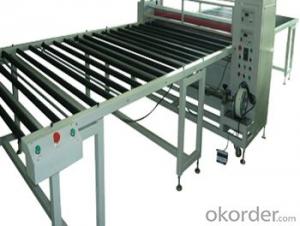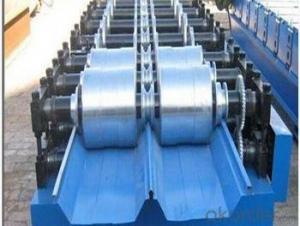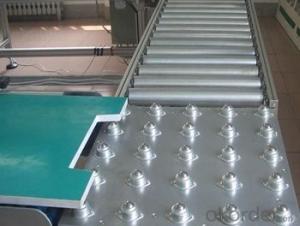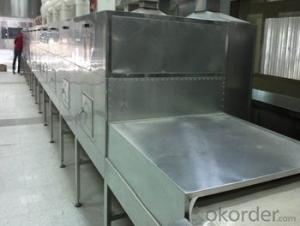FRP pultruded grating with Light weight and best quality with noxic of different styles
- Loading Port:
- Tianjin
- Payment Terms:
- TT OR LC
- Min Order Qty:
- 15 m.t.
- Supply Capability:
- 100000 m.t./month
OKorder Service Pledge
OKorder Financial Service
You Might Also Like
PRODUCT DESCRIPTION
Pultruded grating is made by a particular assembly process, which using “I” shape as its main load-bearing and special rod to go through the bearing bar. Pultruded grating include the standard grating and the custom grating, the custom grating can be designed to meet customer’s requirement or special using condition by changing the shape, size and space of the bearing bars, the surface can be covered with lozenge panel, grit panel, or added the anti-slippery sand directly.
FRP pultruded grating has the most characteristics of molded grating, but it has its distinct advantages, it has very high fiberglass content in the loading direction, so it has very high load capability, it has more superiority when used at wide span, so that the basic support will be decreased and the project cost will be reduced accordingly.
SPECIFICATION
The standard space between two crossbars is 6 inch or 12 inch.
Thickness (mm) | Bar width (mm) | Open space (mm) | Open rate (%) | Approx weight (kg/m |
25.4 | 15.2 | 22.8 | 60 | 13.2 |
25.4 | 15.2 | 15.2 | 50 | 15.9 |
25.4 | 15.2 | 10.1 | 40 | 18.5 |
25.4 | 40 | 10.8 | 21 | 14.5 |
38.1 | 15.2 | 22.8 | 60 | 15.8 |
38.1 | 15.2 | 15.2 | 50 | 19.1 |
38.1 | 15.2 | 10.1 | 40 | 22.4 |
50.8 | 25.4 | 25.4 | 50 | 16.6 |
50.8 | 25.4 | 12.7 | 33 | 21.1 |
CHOICE FOR PULTRUDED GRATING
Resin: GP resin, ISO resin, VE resin, Phenol resin
Color choice: Yellow, gray, green, custom color
Surface choice: Groove surface, grit surface, lozenge cover surface
FEATURES
a. Anti-corrosion and anti-rust
b. Light weight and high strength
c. Anti-flammable
d. Anti- fatigue
e. Safe and anti-slippery
f. Anti-ageing
FIELDS SERVED
Sewage treatment,
water supply and drainage,
chemical industry,
oil industry,
power engineering,
pulp and paper,
construction engineering,
spinning, marine engineering.
APPLICATION
Operation terrace,
stair walkway,
ground floor,
trench cover,
sidewalk.
COMPANT DESCRIPTION
CNBM,China National Building Materials Group is a state-owned enterprise in charge of administrative affairs in china building materials industry. Established in 1984, CNBM is a large group corporation of building materials with total assets of 25 billion RMB and a total staff of 30,000.CNBM now owns 200 subordinating firms of solely owned and joint-venture companies.
CNBM International Corporation is one subsidiary of CNBM, we focus on offering good-quality products,professional service and complete solution to our customers. Strong delivery capacity, advanced technology& management, strong financing capability and excellent after-sale service are our advantages in sharing international market.
FAQ
Q1.What's your sample policy?
A:We can supply the sample if we have ready parts in stock, but the customers have to pay the courier cost.
Q2.Can you produce according to the samples?
A: Yes, we can produce or modify the products according to your request.
Q3.How do you deliver the goods to my country?
A:We can provide international express, such as DHL, EMS, UPS, FedEx, etc. We select air freight and sea freight upon your requests. Quotations if without mentioning the shipping costs are shipping fee excluded.
Q4.How much does it cost to ship to my country?
A:When you goanna to place an order, please contact us, because different country has different freight.
Q5.How to get the catalogue?
A:please contact us and tell us what you are looking for.
We will try our best to meet customers' demands. Welcome you come here to visit us. We sincerely welcome partners around the world to establish business cooperation with us on the basis of mutual trust, benefit and development.
PICTURES
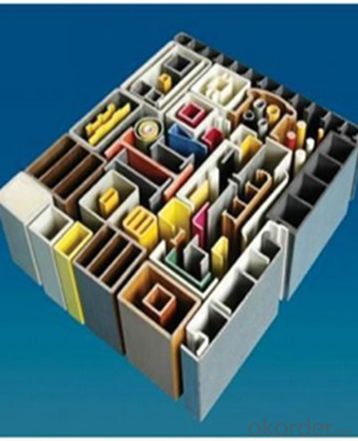

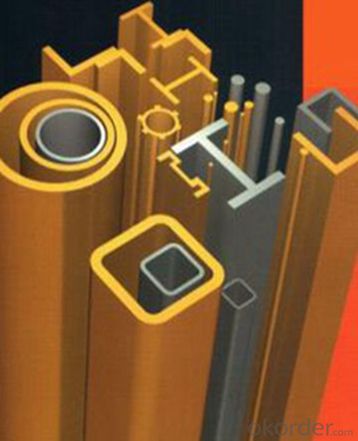
- Q:Do FRP pultrusion profiles require regular maintenance?
- FRP pultrusion profiles do not require regular maintenance. One of the key advantages of FRP (Fiber Reinforced Polymer) is its durability and low maintenance requirements. Unlike traditional materials like wood or steel, FRP does not corrode, rust, or degrade over time. This means that FRP pultrusion profiles do not need to be painted, sealed, or treated for protection against environmental factors such as moisture, UV radiation, or chemicals. Furthermore, FRP is resistant to a wide range of chemicals, making it suitable for various industries, including marine, chemical processing, and wastewater treatment. It also has excellent dimensional stability, meaning it does not warp or deform under changing temperatures or humidity levels. While FRP pultrusion profiles may not require regular maintenance, it is still important to inspect them periodically to ensure their structural integrity. This can involve visual inspections for any signs of damage, such as cracks, delamination, or wear. Additionally, cleaning the profiles with mild soap and water can help remove any surface dirt or contaminants. Overall, FRP pultrusion profiles offer a long-lasting and low-maintenance solution for many applications, making them a cost-effective choice in the long run.
- Q:How do FRP pultrusion profiles handle compression loads?
- FRP pultrusion profiles handle compression loads by utilizing their high strength-to-weight ratio and inherent stiffness. The resin matrix and reinforcing fibers in the pultruded composite material work together to distribute and transmit the compression force, ensuring that the profiles are able to withstand and bear the applied load. The specific design of the profiles, including the orientation and arrangement of the fibers, further enhances their ability to resist compression and maintain structural integrity.
- Q:Can FRP pultrusion profiles be used in the production of electrical insulators?
- Yes, FRP pultrusion profiles can be used in the production of electrical insulators. FRP (Fiber Reinforced Polymer) offers excellent electrical insulation properties, high strength, and corrosion resistance, making it suitable for insulating applications in various industries, including electrical. The pultrusion process enables the production of customized profiles with consistent dimensions and properties, further enhancing their suitability for electrical insulator manufacturing.
- Q:Are FRP pultrusion profiles resistant to hail or impact damage?
- Yes, FRP pultrusion profiles are typically resistant to hail or impact damage due to their strong and durable composition. The combination of reinforced fibers and resin matrix make them highly resistant to external forces, ensuring longevity and minimal damage in the event of hail or impact.
- Q:Can FRP pultrusion profiles be used in protective barriers?
- FRP pultrusion profiles have the capability to be utilized in protective barriers. These profiles possess notable attributes such as a high strength-to-weight ratio, resistance to corrosion, and exceptional durability, which make them suitable for a wide array of applications, including protective barriers. They can be custom-designed and manufactured to meet specific requirements, such as impact resistance, load-bearing capacity, and fire resistance. Furthermore, FRP pultrusion profiles are highly malleable, allowing for easy molding into various shapes and sizes, thus providing flexibility in barrier design. Whether the purpose is to create noise barriers, security fences, or safety barriers, FRP pultrusion profiles offer a reliable and cost-effective solution for protective barriers across multiple industries.
- Q:What is the compression strength of FRP pultrusion profiles?
- The compression strength of FRP pultrusion profiles can vary due to several factors, including the type of resin, fiber orientation, and design. However, on average, the compression strength of these profiles ranges from 10,000 to 50,000 psi. It is worth mentioning that these values are approximate and may differ depending on the specific application and intended use of the FRP profiles. Moreover, manufacturers usually offer technical data sheets that detail the compression strength and other mechanical properties of their FRP pultrusion products. These sheets can be used to obtain more precise and dependable information.
- Q:Are FRP pultrusion profiles resistant to hail or impact damage?
- FRP pultrusion profiles exhibit exceptional resistance to both hail and impact damage. The incorporation of reinforcing fibers such as carbon or glass, along with a polymer resin matrix, grants these profiles unparalleled strength and durability. When compared to materials like wood, steel, or aluminum, FRP pultrusions offer significantly superior impact resistance. These profiles are specifically engineered to endure even the harshest environmental conditions, including hailstorms. The composite composition of FRP enables it to effectively absorb and distribute the energy generated by impacts, effectively preventing the formation of cracks or fractures. As a result, they are an ideal choice for various applications that necessitate protection against hail or impact damage, such as building facades, bridges, handrails, and utility poles. Moreover, FRP pultrusion profiles possess an impressive strength-to-weight ratio, meaning they can withstand heavy impacts without undermining their structural integrity. Furthermore, they are non-corrosive, making them impervious to rust or degradation caused by hail or impact. To summarize, the composite construction and exceptional strength-to-weight ratio of FRP pultrusion profiles render them highly resistant to hail or impact damage. They offer a reliable and long-lasting solution for applications that demand durability and resilience in the face of harsh environmental conditions.
- Q:How do FRP pultrusion profiles perform in high humidity environments?
- FRP (Fiber Reinforced Polymer) pultrusion profiles perform exceptionally well in high humidity environments. The inherent properties of FRP, such as its corrosion resistance and moisture resistance, make it an ideal material for applications that are exposed to moisture or high humidity. One of the key advantages of FRP pultrusion profiles is that they are non-porous, which means they do not absorb moisture. This characteristic prevents the profiles from swelling, warping, or rotting when exposed to high levels of humidity. Unlike traditional materials like wood or steel, FRP does not degrade or lose its structural integrity in humid conditions. Additionally, FRP pultrusion profiles have a high resistance to chemicals, including the corrosive effects of moisture and humidity. This resistance to corrosion is due to the composite nature of FRP, which combines a matrix material (typically a resin) with reinforcing fibers, such as glass or carbon fibers. This combination provides excellent resistance to water and moisture-induced corrosion, ensuring the long-term performance of FRP profiles in high humidity environments. Furthermore, FRP pultrusion profiles offer excellent dimensional stability, even under extreme temperature and humidity variations. They do not expand or contract significantly, maintaining their shape and structural integrity in diverse environmental conditions. This stability makes FRP profiles suitable for applications in coastal regions, wastewater treatment plants, chemical processing plants, and other environments where humidity levels are high. Overall, FRP pultrusion profiles are specifically engineered to withstand harsh conditions, including high humidity environments. Their non-porous nature, resistance to corrosion, and dimensional stability make them a reliable and durable choice for various applications in humid climates.
- Q:Are FRP pultrusion profiles UV-resistant?
- Yes, FRP (Fiber Reinforced Polymer) pultrusion profiles are typically UV-resistant. This is because they are manufactured using a combination of reinforcing fibers, such as glass or carbon, and a polymer matrix, such as polyester or vinyl ester. These materials are inherently resistant to UV radiation, which means that FRP pultrusion profiles can withstand prolonged exposure to sunlight without significant degradation or loss of mechanical properties. However, it is important to note that the specific UV resistance of FRP pultrusion profiles can vary depending on the type and quality of the polymer matrix used in their construction. Therefore, it is advisable to consult the manufacturer or supplier for detailed information on the UV resistance of specific FRP pultrusion profiles.
- Q:How do FRP pultrusion profiles handle cyclic loading?
- FRP pultrusion profiles are known for their excellent performance under cyclic loading conditions. The unique combination of materials and manufacturing process used in pultrusion makes these profiles highly resistant to fatigue and cyclic loading effects. One key factor that contributes to the superior performance of FRP pultrusion profiles under cyclic loading is their inherent high strength-to-weight ratio. These profiles are made using continuous fibers, typically fiberglass, which are impregnated with a resin matrix. This results in a lightweight yet strong material that can handle repeated loading without experiencing significant degradation or fatigue. Additionally, the pultrusion process allows for precise control over the fiber orientation and resin distribution within the profile. This results in a uniform and consistent material composition throughout the entire length of the profile. As a result, FRP pultrusion profiles exhibit excellent load distribution characteristics, minimizing stress concentrations and preventing localized failure under cyclic loading conditions. Furthermore, the corrosion resistance of FRP pultrusion profiles plays a crucial role in their ability to handle cyclic loading. Unlike traditional materials such as steel, FRP profiles do not suffer from corrosion-related issues, such as rust or pitting. This corrosion resistance ensures that the profiles maintain their structural integrity even when subjected to cyclic loading over extended periods of time. Overall, FRP pultrusion profiles are specifically designed and manufactured to withstand cyclic loading conditions. Their high strength-to-weight ratio, uniform material composition, and corrosion resistance make them ideal for applications where cyclic loading is a significant factor. Whether it's in structural reinforcements, bridges, sporting equipment, or various industrial applications, FRP pultrusion profiles have proven to be reliable and durable under cyclic loading.
1. Manufacturer Overview |
|
|---|---|
| Location | |
| Year Established | |
| Annual Output Value | |
| Main Markets | |
| Company Certifications | |
2. Manufacturer Certificates |
|
|---|---|
| a) Certification Name | |
| Range | |
| Reference | |
| Validity Period | |
3. Manufacturer Capability |
|
|---|---|
| a)Trade Capacity | |
| Nearest Port | |
| Export Percentage | |
| No.of Employees in Trade Department | |
| Language Spoken: | |
| b)Factory Information | |
| Factory Size: | |
| No. of Production Lines | |
| Contract Manufacturing | |
| Product Price Range | |
Send your message to us
FRP pultruded grating with Light weight and best quality with noxic of different styles
- Loading Port:
- Tianjin
- Payment Terms:
- TT OR LC
- Min Order Qty:
- 15 m.t.
- Supply Capability:
- 100000 m.t./month
OKorder Service Pledge
OKorder Financial Service
Similar products
New products
Hot products
Related keywords
